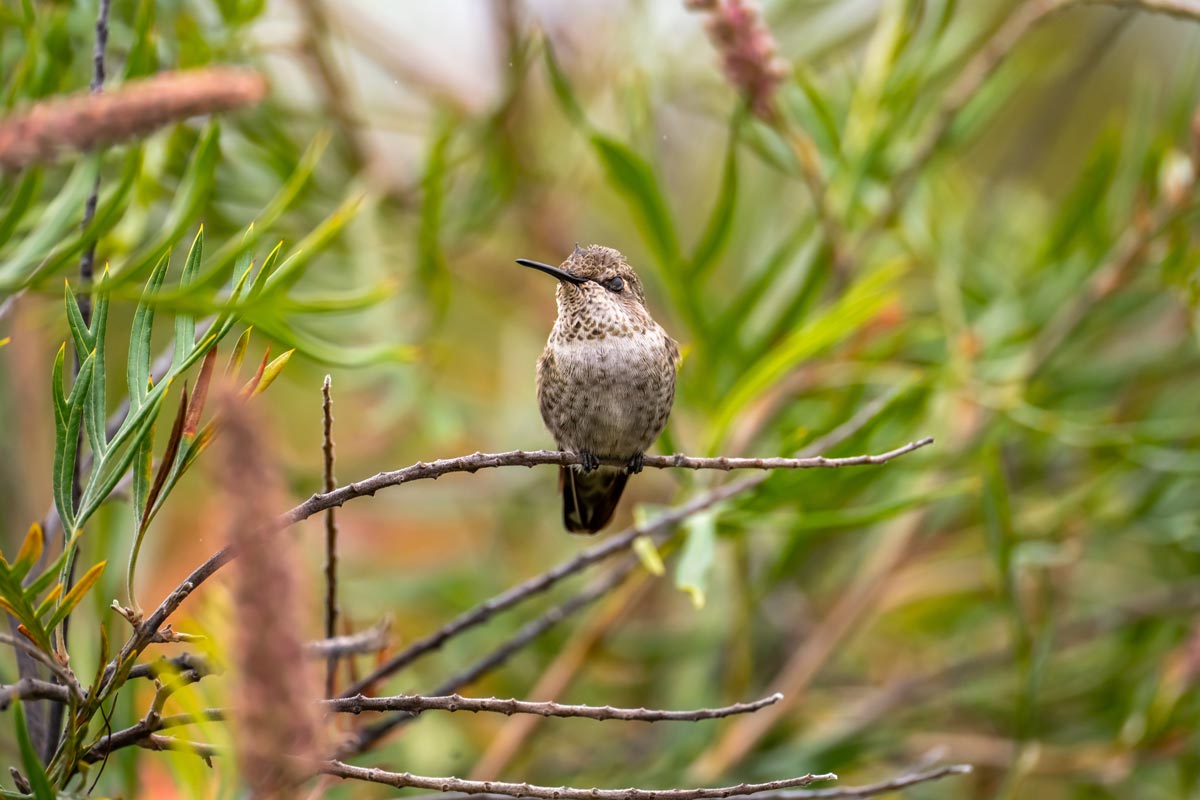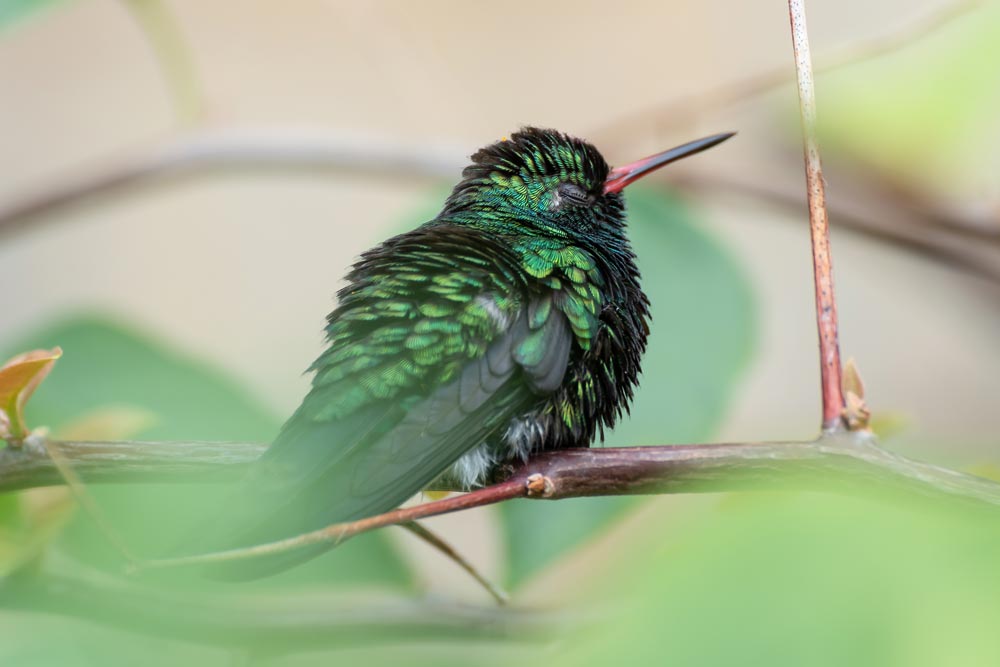When it comes to sleep, hummingbirds present a fascinating case with their distinct approach to rest compared to other birds.
Hummingbirds: the masters of torpor
Hummingbirds are renowned for their ability to enter a state called torpor. Unlike most birds, they don't simply sleep through the night. Instead, they significantly lower their metabolic rate and body temperature. This deep, hibernation-like state allows them to survive cold nights and times of food scarcity.

Torpor is technically not a kind of sleep. Sleep uses lots of energy and restores the body in the process, while torpor drastically decreases physiological activity to conserve energy.
During torpor, a hummingbird's heart rate slows dramatically from over 1,000 beats per minute to just a few beats, and its body temperature drops significantly.

Each night, hummingbirds enter this state as part of their regular sleep cycle, resting from dusk to dawn for 8 to 12 hours. This extended period of rest is crucial for recovering from the extreme energy expenditure required for their rapid wing beats and high metabolism.
Studies have found that hummingbirds can experience varying depths of torpor — from shallow to deep — staying in it for just a few hours or throughout the entire night.

Torpor and nest safety: why secure resting places matter
While in torpor, especially deep torpor, hummingbirds are effectively impervious to outside disturbances. This makes them highly vulnerable to threats, so a secure resting place is essential.

For this reason, hummingbirds only build their nests in well-hidden, sheltered spots, often on tree branches or in dense foliage. These nests are typically small and intricately constructed, providing a snug environment that offers protection from predators and harsh weather. The nest's placement and construction are vital for ensuring their safety during these vulnerable periods of inactivity.
Torpor and migration
Torpor is essential for hummingbird migration, helping them conserve energy during long flights between breeding and wintering grounds. This adaptation enables them to efficiently manage their energy while traveling vast distances and navigating periods of limited food resources.
